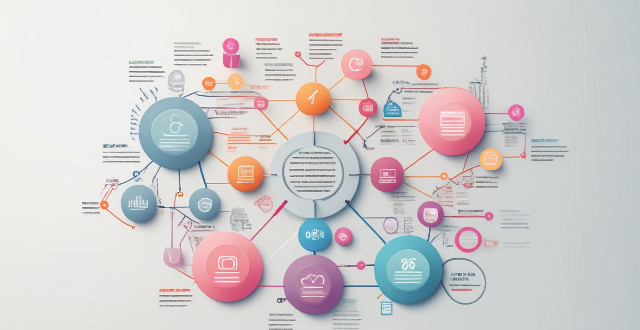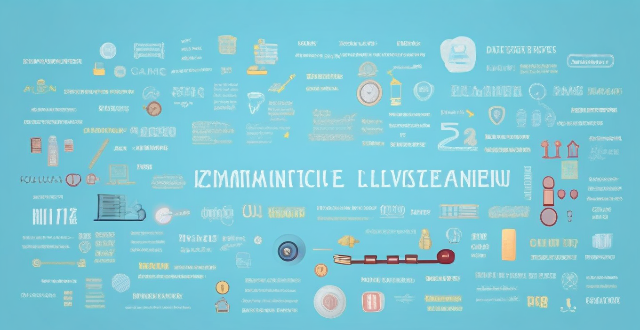Game Player

What impact does GPS tracking and other monitoring systems have on team strategy and player safety ?
GPS tracking and other monitoring systems have a significant impact on team strategy and player safety. They provide coaches with real-time data on players' movements, speed, and distance covered during training and games, allowing for enhanced performance analysis, optimized training regimens, and improved game planning. Additionally, these systems help reduce injury risk by monitoring physical activity levels and providing feedback on potential overexertion, enhancing recovery processes through post-game analysis, and improving emergency response in the event of an injury. Overall, GPS tracking and other monitoring systems are essential tools for optimizing team performance and ensuring player safety in sports.

What are the key elements of educational game development ?
Educational game development involves defining learning objectives, understanding the target audience, designing engaging game mechanics and visuals, developing relevant content, implementing assessment and feedback mechanisms, conducting iterative testing, and collaborating with experts in the field. By addressing these key elements, developers can create effective educational games that support learning outcomes and enhance the overall player experience.

How do smart courts and fields improve player experience and performance ?
Smart courts and fields, equipped with advanced technologies such as sensors, artificial intelligence, and data analytics, have revolutionized the way athletes train and compete. These innovative environments not only enhance the player experience but also contribute significantly to their performance improvement. Here's a detailed breakdown of how smart courts and fields achieve this: ## Enhancing Player Experience ### Real-Time Feedback - **Instant Analysis**: Players receive immediate feedback on their techniques and strategies through sensors and AI, allowing them to make adjustments during practice or competition. - **Visualization Tools**: Augmented reality and virtual reality provide immersive training experiences, helping players better understand game scenarios and improve decision-making skills. ### Personalized Training Programs - **Data-Driven Approach**: Smart systems collect data on individual performances, enabling coaches to create tailored training programs for each player. - **Adaptive Learning**: As players progress, smart technologies adapt the difficulty level of training exercises to match their evolving skills. ### Increased Engagement - **Gamification**: Integrating game elements into training sessions boosts motivation and enjoyment, making workouts more engaging and fun. - **Social Interaction**: Online platforms connected to smart courts enable players to interact with peers, share achievements, and engage in friendly competitions remotely. ## Improving Performance ### Objective Assessment - **Accurate Metrics**: Advanced tracking systems provide precise measurements of speed, power, agility, and other key performance indicators. - **Error Detection**: Machine learning algorithms can identify subtle errors in technique that human eyes might miss, leading to more effective corrections. ### Injury Prevention - **Biomechanical Analysis**: Smart technologies monitor players' movements to detect patterns that could lead to injuries, allowing preventative measures to be taken. - **Load Management**: By analyzing workload data, smart systems help coaches make informed decisions about rest periods and training intensity to avoid overtraining. ### Strategic Insights - **Opponent Analysis**: Data collected from opponents' performances can reveal tendencies and weaknesses, aiding in strategic planning. - **Trend Forecasting**: Analytics tools predict future trends based on historical data, giving teams an edge in adjusting tactics and training regimens. ### Recovery Optimization - **Post-Workout Recovery**: Smart devices track recovery metrics like heart rate variability, suggesting optimal recovery times and methods. - **Nutritional Guidance**: Based on performance data, smart systems offer personalized nutritional advice to aid recovery and improve overall health.

What role does machine learning play in sports analytics ?
Machine learning is transforming sports analytics by analyzing player performance, team strategies, and game outcomes. It helps evaluate players' strengths and weaknesses, predict future performance, and develop training plans. Machine learning also aids in understanding how different team strategies affect game outcomes and predicting game results based on various factors. As technology advances, we can expect more innovative applications of machine learning in sports.

What are the limitations of using AI for talent scouting and player evaluation ?
The limitations of using AI for talent scouting and player evaluation include the inability to account for intangibles such as emotional intelligence and team chemistry, reliance on potentially biased historical data, lack of human intuition in pattern recognition and contextual understanding, ethical concerns regarding privacy and fairness, cost and accessibility barriers, and legal and regulatory challenges related to data protection laws and intellectual property rights.

How is artificial intelligence being used in sports ?
Artificial intelligence (AI) is revolutionizing the world of sports, from enhancing player performance to improving fan engagement. AI technologies are helping athletes and coaches optimize their training and performance by analyzing data generated by wearable devices during training sessions, predicting injuries before they occur, and providing feedback on areas for skill improvement. AI is also transforming the way teams strategize and analyze games by providing real-time game analysis, predictive analytics, and opponent scouting. Additionally, AI is enhancing the fan experience by providing personalized content, virtual reality and augmented reality experiences, and accessibility options for people with disabilities. Overall, AI is rapidly transforming the sports industry and we can expect even more exciting developments in the future.

How does the globalization of sports impact player recruitment and talent development ?
The globalization of sports has led to increased competition in player recruitment, diversification of talent pools, and the adoption of advanced training methods. This includes exposure to international markets, cultural exchange, geographic broadening, demographic variety, technological integration, scientific approaches, language and communication adaptation, and education and life skills development.

What is the status of the NBA All-Star game due to COVID-19 concerns ?
The NBA All-Star game was canceled in 2021 due to COVID-19 concerns. This decision had a significant impact on both players and fans, as they missed out on an exciting event. Alternative events were organized to provide some entertainment value, but they were not able to fully replace the excitement of the actual All-Star game. The future of the event remains uncertain, but changes may be made to better accommodate health and safety concerns moving forward.

What role does sports economics play in determining player salaries and contracts ?
Sports economics plays a crucial role in determining player salaries and contracts by considering various factors such as market demand and supply, revenue generation, cost of production, risk management, competitive balance, and free agency. Teams must make informed decisions about player compensation while balancing financial considerations with the goal of achieving success both on and off the field.

How can coaches use sports technology analysis to develop game strategies ?
Coaches can utilize sports technology analysis in numerous ways to develop game strategies. Key points include: 1. Data collection and analysis for player performance tracking and opponent research. 2. Utilizing video analysis software for tactical breakdowns and play design. 3. Conducting biomechanical assessments for injury prevention and performance optimization. 4. Implementing virtual reality (VR) training for simulated environments and skill development. 5. Using GPS and radio frequency identification (RFID) systems for movement analysis and load management. 6. Applying advanced statistics and analytics for deeper insights into performance and trend analysis. 7. Leveraging communication tools for instant feedback and strategy sharing. 8. Incorporating weather forecasting tools to adapt practices and prepare for game day conditions. 9. Employing recovery technology to monitor and enhance player recovery methods. 10. Integrating strength and conditioning apps for customized workouts and progress tracking. By incorporating these technological tools, coaches can make more informed decisions, improve player development, and gain a competitive edge during practices and games.

How does data analytics improve team performance in sports ?
Data analytics has transformed sports by providing teams with valuable insights into player performance, training programs, game strategy, and predicting outcomes. By leveraging advanced technologies and statistical methods, coaches and players can make more informed decisions that lead to improved performance on the field or court. Key benefits of data analytics in sports include identifying key performance indicators (KPIs), optimizing training programs, enhancing game strategy, evaluating player performance, and predicting outcomes. Overall, data analytics is a powerful tool for teams looking to gain an edge over their competitors and achieve success in their sport.

In what ways do data-driven insights influence training methods in sports ?
Data-driven insights significantly influence training methods in sports by providing valuable information for performance analysis, injury prevention and recovery, game strategy development, and mental health monitoring.

Is there potential for AI to revolutionize sports journalism and broadcasting ?
Artificial Intelligence (AI) has the potential to revolutionize sports journalism and broadcasting by automating content generation, enhancing data analysis and visualization capabilities, delivering personalized content, generating automated commentary, creating immersive VR experiences, and customizing broadcasts based on viewer preferences. AI can save time for journalists, allowing them to focus on more complex tasks such as investigative reporting or in-depth analysis. It can also uncover insights and trends from raw data and present them in visually appealing formats. Personalized content delivery can recommend articles, videos, and other content that align with individual interests. In sports broadcasting, AI can generate play-by-play commentary based on live data feeds, describe each play as it happens, and provide insightful color commentary that adds depth to the viewer's understanding of the game. Virtual reality technology can create immersive experiences that allow viewers to feel like they are part of the action. Finally, AI can customize broadcasts based on viewer preferences by analyzing user data such as viewing history and social media activity. As AI technology continues to evolve and improve, we can expect even more innovative applications in these fields that will further enhance the fan experience and change the way we consume sports content forever.

What are some examples of cutting-edge technologies used in professional sports ?
Cutting-edge technologies have revolutionized professional sports, improving athlete performance, fan engagement, and operational efficiency. Wearable technology tracks health metrics, while VR/AR enhances training and fan experiences. Biometric data analysis optimizes physical condition, video analytics deepens game insights, AI transforms coaching, scouting, and fan interaction, and IoT devices improve facility management. These advancements promise continued innovation in the future of professional sports.

How do advanced statistics change the strategy in sports like basketball and football ?
Advanced statistics are revolutionizing basketball and football by providing coaches and players with detailed data to make informed decisions. In basketball, metrics like True Shooting Percentage and Player Efficiency Rating have led to changes in shooting efficiency, pace of play, and defensive strategies. The Golden State Warriors and Houston Rockets are examples of teams leveraging advanced analytics successfully. In football, metrics such as Win Probability Added and Expected Points Added help coaches evaluate player performance and shape strategic decisions. The New England Patriots and Seattle Seahawks are among the teams known for their innovative use of analytics. As technology advances, we can expect more sophisticated strategies in both sports.

What software tools are commonly used for sports data analysis by coaches and analysts ?
Sports data analysis has become a crucial aspect of modern sports coaching and management. Coaches and analysts use various software tools to collect, analyze, and interpret data to enhance team performance, player development, and tactical planning. Some commonly used software tools for sports data analysis include Prozone, StatsBomb, Opta, Hudl, and SoccerMetrics. These tools offer features such as player performance analysis, event data tracking, in-depth match analysis, video analysis, performance tracking, and visualization tools. Coaches and analysts can choose the ones that best suit their needs and preferences to gain valuable insights into their team's performance and make informed decisions to improve their results.

How has AI influenced the way we watch and engage with sports ?
Artificial Intelligence has transformed the way we watch and engage with sports. AI technology has improved the viewing experience, provided valuable insights into sports performance and strategy, and enhanced fan engagement through features like virtual reality, real-time highlights, personalized content, player performance analysis, game strategy analysis, injury prevention, fan interaction, gamification, and augmented reality. These advancements have revolutionized the sports industry and will continue to shape our relationship with sports in the future.

In what ways do gamification and game-based learning foster innovative teaching environments ?
Gamification and game-based learning foster innovative teaching environments by engaging students with challenges and rewards, promoting collaboration and competition, providing immediate feedback and personalization, and enhancing student motivation and engagement. These methods use elements of games to motivate students and enhance their learning experience, making learning more fun, interactive, and enjoyable. By incorporating these approaches, educators can transform traditional classrooms into dynamic spaces where students actively participate in their own learning journey.

How does network latency affect online gaming ?
Network latency, or "lag," is the delay in data transmission between a player's device and the gaming server. This delay can significantly impact online gaming by affecting gameplay smoothness, multiplayer interaction, game design, and user experience. High latency can cause input delay, movement jitter, synchronization issues, communication delays, and disconnections, making games frustrating and unplayable. In contrast, low latency offers responsive controls, smooth movement, fair play, effective communication, and an immersive experience. Game developers use optimization strategies like client-side prediction and server-side interpolation to minimize latency's effects. Managing network latency is crucial for maintaining a high-quality online gaming environment.

What are the current trends in educational game development ?
The text describes the current trends in educational game development. These trends include gamification, personalized learning, collaborative learning, real-world applications, and augmented reality (AR) and virtual reality (VR). Gamification involves incorporating game elements into non-game contexts, such as education. Personalized learning focuses on tailoring the learning experience to individual students' needs and preferences. Collaborative learning encourages students to work together towards a common goal. Real-world applications help students understand how the concepts they are learning can be applied in practical situations. Augmented reality (AR) and virtual reality (VR) technologies provide immersive experiences that enhance learning. These trends aim to make learning more engaging, personalized, collaborative, applicable, and immersive for students.

What programming languages are commonly used in educational game development ?
The text is about educational game development and the programming languages used. It lists some of the most commonly used programming languages in educational game development, including Python, JavaScript, Java, C#, UnityScript (C# variant), and HTML5/CSS3/JavaScript. The pros and cons of each language are discussed, along with examples of games that use them. The conclusion states that by choosing the right language for your project, you can ensure that your game is engaging, educational, and accessible to a wide audience.

What role does gamification play in educational game development ?
Gamification plays a crucial role in educational game development. It is the process of incorporating game elements into non-game contexts to make them more engaging and motivating for learners. In the realm of education, gamification can transform traditional learning experiences into interactive and enjoyable ones. This approach not only enhances student engagement but also fosters a positive learning environment. Key roles of gamification in educational game development include enhancing student engagement, providing immediate feedback, fostering competition and collaboration, encouraging self-directed learning, and incorporating relevant content. By leveraging these principles, educators can create effective learning experiences that are both enjoyable and impactful for students.

Can you explain the role of a sports analyst in professional sports teams ?
The role of a sports analyst in professional sports teams is to collect and analyze data, develop strategies, evaluate performance, support player development, communicate effectively, and continuously learn. They are crucial members of any team as their insights help improve the team's performance and make strategic decisions.

What are the challenges faced by educational game developers in creating games that are both fun and educational ?
The text discusses the main challenges faced by educational game developers, including balancing education and entertainment, meeting educational standards, adapting to different learning styles, and engaging students long-term.

What is the latest news on LeBron James' injury ?
LeBron James, the Los Angeles Lakers' star player, suffered a high ankle sprain on his right leg during a game against the Atlanta Hawks. The recovery timeline for this injury varies, but he is expected to miss at least a few games as he undergoes treatment and rehabilitation. The Lakers will need to adjust their strategy in his absence and rely on other players to maintain their performance.

How do team sports contribute to social skills development in teenagers ?
Team sports offer a plethora of benefits for teenagers, one of the most significant being the development of social skills. Here's how: 1. **Communication**: Team sports require effective communication to achieve success, such as calling plays, using body language, and non-verbal signals. 2. **Cooperation**: Playing on a team requires cooperation among players to work together towards a common goal, like passing the ball or working together on defense. 3. **Leadership**: Leadership is necessary for success in team sports, whether it's the captain leading warm-ups or a player stepping up in a critical moment. 4. **Respect**: Respect is crucial in team sports, as players must respect their coaches, teammates, opponents, and officials to succeed both on and off the field.